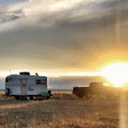Boondocking, often referred to as “dry camping” or “wild camping,” allows RVers to fully immerse themselves in the serene beauty of untouched nature. Rather than being tethered to RV parks or campgrounds, boondockers choose to camp without the convenience of traditional hookups. While the tranquility and freedom are unmatched, boondocking also comes with its set of challenges, especially concerning safety. Here are some essential tips and best practices to ensure your boondocking experience is both memorable and secure.
-
Research and Plan Ahead
- Familiarize yourself with public lands that allow boondocking such as BLM (Bureau of Land Management) areas or national forests.
- Always know the rules and regulations for camping in these areas.
- Use apps or websites dedicated to boondocking sites and read reviews. Often, fellow RVers will leave notes about safety or any concerns they might have had.
-
Select a Safe Spot
- Aim for spots that are far from the main road, yet not too isolated in case of emergencies.
- Look for level ground and ensure you’re not in a low-lying area that might be prone to flooding.
- Be wary of parking beneath unstable rock formations or dead tree limbs.
-
Be Prepared
- Bring ample water, food, and essentials, as you will not have the convenience of hookups.
- Ensure your RV battery is fully charged, and consider investing in a solar panel for extended stays.
- Have a reliable communication device. While cell service may be spotty, satellite phones or radios can be lifesavers.
-
Secure Your RV
- Always lock your RV when you leave, and even when you’re inside.
- Consider investing in motion-sensor lights or an alarm system.
- Store valuables out of sight.
-
Wildlife Awareness
- Remember you’re in their territory. Store food securely to avoid attracting animals.
- Educate yourself on the wildlife native to the area and know how to react if you encounter them.
-
Fire Safety
- Always check for fire restrictions in the area.
- If campfires are allowed, ensure they're properly extinguished before leaving or sleeping.
- Keep a fire extinguisher in your RV and know how to use it.
-
Mind Your Waste
- Use biodegradable products.
- If there are no restroom facilities, consider a portable toilet and always follow Leave No Trace principles.
- Pack out what you pack in. Leave your campsite cleaner than when you arrived.
-
Trust Your Gut
- If something doesn’t feel right about a location or someone nearby, it’s okay to relocate. Your safety and comfort are paramount.
-
Connect with Fellow Boondockers
- If you’re in a popular boondocking area, try to camp near other RVers. There’s safety in numbers, and it can also lead to meaningful connections with fellow enthusiasts.
-
Emergency Preparedness
- Always inform someone trustworthy about your travel plans and expected return.
- Keep a first-aid kit, and familiarize yourself with basic first-aid procedures.
- Ensure you have a plan for how to get help in case of emergencies, whether it’s using a flare, horn, or emergency communication device.
Boondocking in an RV is an unparalleled way to connect with nature, and with the right precautions, it can be an incredible and safe adventure. By following the above guidelines, you’ll ensure your experience is both rewarding and secure. Safe travels!
